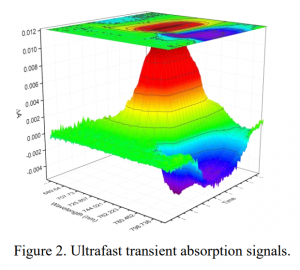K. Pydzińska-Białek, V. Drushliak, E. Coy, K. Załȩski, J. Flach, J. Idígoras, L. Contreras-Bernal, A. Hagfeldt, J. A. Anta, M. Ziółek,
Understanding the Interfaces between Triple-Cation Perovskite and Electron or Hole Transporting Material, ACS Appl. Mater. Interfaces 12 (2020) 30399-30410
Perovskite solar cells have undergone a tremendous increase in efficiency from below 4% in 2009 to above 25% only ten years later in 2019. Probably the most stable and most efficient material composition is so called triple cation perovskite comprising methylammonium, formamidinium and cesium cations, together with I, Br and Pb compounds. Such kind of solar cells, prepared under water-free drybox conditions or under ambient room humidity, have been studied in our above paper. Our focus was to study the interfaces of the perovskite material with TiO2 and organic material layer that transport photogenerated electrons and holes, respectively. We have revealed significant differences in the perovskite properties close to both interfaces: by the morphological studies, stationary, electrochemical impedance, and time-resolved laser spectroscopies results. Figure 1 shows SEM cross sections image of the studied perovskite solar cell. Figure 2 presents the examples of the initial ultrafast transient absorption signals of the studied perovskite materials in time and wavelength domains.

The above work was a results of our collaboration with the prominent groups of Prof. Anders Hagfeldt from EPFL in Lausanne and Prof. Juan A. Anta from Universidad Pablo de Olavide in Sevilla.
The article is available at: https://doi.org/10.1021/acsami.0c07095 (Open Access)




